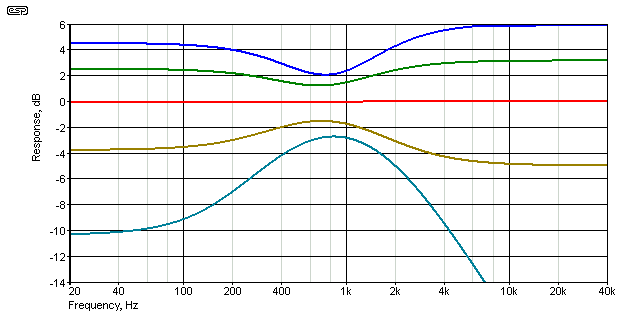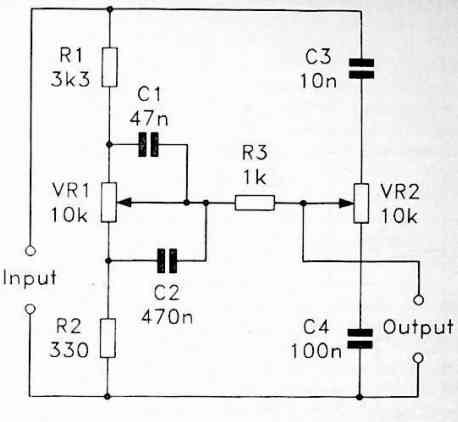thomasdf
Well-known member
How did the experimenting go ? I am curious about this design 

The circuit you posted is intended for use in tube circuits where the circuit ir feeds is a very high impedance tube input (a FET op amp would be a good substitute). It bears no relation whatsoever to my mastering EQ design
Would this EQ circuit make sense in a tube microphone amplifier in the constallation:The circuit you posted is intended for use in tube circuits where the circuit ir feeds is a very high impedance tube input (a FET op amp would be a good substitute). It bears no relation whatsoever to my mastering EQ design
Cheers
Ian
Yes, it would work in that context. Insertion loss depends on the maximum boost required but would be typically 20dB.Would this EQ circuit make sense in a tube microphone amplifier in the constallation:
Input Transformer - SRPP - EQ (mono) - SRPP - Output Transformer
What is the insertion loss of such a passive EQ circuit?
Absolutely star struck, I swear I just stare at your G pultec schematic most days! I mean there's a reason it just isn't done, and that makes sense, with the tiny capacitance needed to balance it, that the stray capacitance would mess it up. Do you guys know any equations or have recommended literature on how to calculate how impedance would affect an inductor eq circuit?Your main problem when going the high-Z way with passive LC eq's is that even though you can source high-inductance inductors these days, they usually come with such high stray capacitance that they're not really usable for LC eq'ing after all - and this before even considering the low saturation headroom resulting from the many-many turns required. I ran into this limitation also while making the G14..
I'd recommend that you try with a simple mock-up first, to confirm real-life viability of your idea before committing too much energy here
/Jakob E.
(ps: there's always the GPultec project, that one is rather accessible and already proven..)
I think the 33609 is essentially a repackaged 2254 which was the Neve compressor when I was there in the mid 70s. It was designed by David Rees who had moved to Audix by the time I got to Neve. Not sure where he went after that.Hi Ian, just a question out of curiosity: do you know who designed the 33609?



Hi Ian, I didn't mean to imply there was any relation to your designs. I just wanted to point to a very cheap alternative which might be interesting for experimentation ;-)The circuit you posted ... bears no relation whatsoever to my mastering EQ design
Cheers
Ian